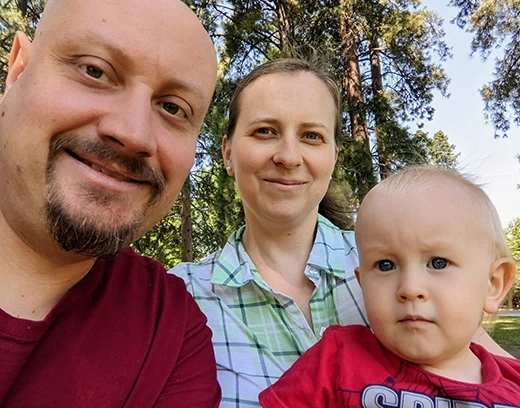Complete Comparison of Family Preference Visas and Immediate Relative Visas
Knowing the difference between Family Preference and Immediate Relative visas is essential to U.S. immigration. Regarding eligibility, processing timelines, and overall benefits, these categories are very different. This thorough examination aims to explain these differences so that families may choose their immigration route with knowledge. At Passage Law, expert family immigration lawyers make overcoming these complexities easier.
Immediate Relative Visas
The closest family members of U.S. citizens are covered by immediate relative visas. Specifically, the benefits are:
- Spouses of citizens of the United States.
- American citizen unmarried children under 21.
- Parents of United States citizens, if the person is at least 21 years old.
There is no yearly numerical restriction on Immediate Relative visas, which is their main benefit. Process times are far shorter with this exception than with Family Preference visas. Because they are given priority under the immigration system, immediate relatives usually get their green cards and visas faster.
Eligibility Criteria for Immediate Relative Visas
An Immediate Relative visa requires an actual link between the petitioner and the beneficiary for a U.S. citizen. For spouses, this means offering documentation of a valid marriage, such as shared financial records, wedding photos, and affidavits from friends and relatives. For children, adoption documents or birth certificates are needed; for parents, the petitioner’s birth certificate is needed to prove the relationship.

At Passage Law, our knowledgeable family immigration lawyers can help collect and present the required paperwork to guarantee an easy application process.
Family Preference Visas
Family preference visas serve the more distant relatives of lawful permanent residents and citizens of the United States. There are multiple groups of these visas, each with particular eligibility criteria:
- F1: Sons and daughters of U.S. citizens who are single and at least 21 years old.
- F2A: Spouses and young unmarried children of lawful permanent residents.
- F2B: Lawful permanent resident with unmarried sons and daughters (21 years of age and up).
- F3: Married children of U.S. citizens.
- F4: If a U.S. citizen is at least 21 years old, siblings for that citizen.
Annual numerical restrictions on Family Preference visas may cause lengthier wait times. Monthly visa bulletins from the U.S. Department of State list these visas’ availability according to the priority date of the application. Anyone applying under the Family Preference categories must read this announcement.
Key Differences Between Immediate Relative and Family Preference Visas
Eligibility:
- Immediate Relative Visas: Only the closest family members—spouses, unmarried children under 21, and parents of U.S. citizens—are eligible for immediate relative visas.
- Family Preference Visas: For siblings and adult children among a wider group of family members.
Processed Times:
- Family Preference Visas: Subject to annual limits, resulting in possibly lengthy wait times.
- Immediate Relative Visas: These are usually processed faster because there is no annual limit.
Application Procedure:
- The petitioner for either kind of visa must submit Form I-130 or the Petition for Alien Relative. However, the process for immediate relative visas is frequently more effective.
Detailed Study of Family Preference Categories

F1 Category: US Citizens’ Unmarried Sons and Daughters
This category is for the adult (21 years of age and up) unmarried children of citizens of the United States. Applicants in this category often have to wait longer than those in other preferred categories because of the annual visa limits.
F2A Category: Spouses and Unmarried Children (Under 21) of Lawful Permanent Residents
In the visa bulletin, this category has seen varying priority dates—at times becoming current and at other times facing delays. The F2A category is special in that it covers relationships more closely to those of Immediate Relative visas by enabling lawful permanent residents to petition for their immediate family members.
F2B Category: Unmarried Sons and Daughters (21 and Up) of Lawful Permanent Residents
Adult unmarried children of green card holders are covered by the F2B category. The greater demand and fewer visa numbers for this category usually result in longer wait times than for F2A.
F3 Category: Married Sons and Daughters of Citizens of the United States
The F3 category offers married children of citizens of the United States a route to immigration. However, because there are so many applications and so few yearly visas available, this category is frequently seriously delayed.
F4 Category: Family Members of U.S. Citizens
Siblings of American citizens are classified as F4 as long as the citizen is at least 21 years old. The great demand and the low number of visas available each year cause this category to have among the longest wait times—often several years.
Strategy Development for Immigration of Families
Planning strategically for family immigration requires an understanding of the distinctions between Immediate Relative and Family Preference visas. With Family Preference visas, wait durations and visa availability must be carefully considered; Immediate Relative visas provide a simpler route with fewer delays. Handling these issues might be aided by consulting with knowledgeable family immigration attorneys.
The Immediate Relative Visa Application Process
U.S. citizen petitioners submitting Form I-130, Petition for Alien Relative, with the U.S. Citizenship and Immigration Services (USCIS) start the application process for Immediate Relative visas. Whether the recipient is inside or outside of the United States will determine how the petition is handled when it is allowed.
- Status Adjustment: The beneficiary can be qualified to change their status to that of a lawful permanent resident without having to leave the country if they are already in the United States Form I-485, Application to Register Permanent Residence or Adjust Status, must be filed concurrently with Form I-130.
- Consular Processing: The beneficiary, if they are not citizens of the United States, must apply for an immigrant visa at a U.S. embassy or consulate within their nation.
- At Passage Law, our committed group of family and immigration lawyers can help you at every stage of the procedure and make sure that all forms are filled out and sent correctly.
Process for Family Preference Visa Applications

Form I-130 filed by the U.S. citizen or lawful permanent resident petitioner initiates the application procedure for Family Preference visas as well. Nevertheless, applicants have to wait for their priority date to become current as per the visa bulletin because of the numerical restrictions on these visas.
- Priority Date: The filing day of the I-130 petition is the priority date. This date establishes the applicant’s list position for processing the visa.
- Visa Bulletin: Listing the priority dates currently being processed, the U.S. Every month, the State Department publishes a visa bulletin.
To learn when they may move on with their application, applicants should keep an eye on this announcement. If the priority date becomes current, the beneficiary may move on to consular processing (if outside the United States) or status adjustment (if within the United States).
Value of Legal Advice for Family Immigration
It could be challenging and stressful to deal with the US immigration system. Reducing the possibility of delays and rejections, accurate preparation and submission of applications is made possible by the legal advice of an experienced family immigration attorney. Immigration and family law is our area of expertise at Passage Law.
Case Studies and Real-Life Examples
Straightforward Success Story with Relative Visa
Take John, a citizen of the United States, who got married to Maria, a Spanish citizen. Using a family immigration lawyer from Passage Law, John submitted Maria’s I-130 petition. Maria was not bound to the numerical restrictions because she was an immediate relative. Shortly after the petition was granted, Maria changed her immigration status and in less than a year she was granted her green card.
Problem with Family Preference Visa
Compare this to the situation of Ahmed, a Pakistani lawful permanent resident who wanted to bring his unmarried son Bilal to the United States. Ahmed filed an F2B category I-130. Because F2B visas have annual limits, Bilal had to wait a long time even though he finished all the paperwork on time. Bilal’s priority date took many years to become current, highlighting the difficulties and waits frequently connected to Family Preference visas.
Tips for Avoiding Common Pitfalls
- Correct Documentation: Make sure every paper is filled out and sent incorrectly. Denials or delays might result from mistakes.
- Check the Visa Bulletin: To keep informed about your priority date, check the Visa Bulletin often.
- Legal Representation: Getting in touch with an experienced family immigration lawyer will assist you in managing the complexities.
Predictions for Family Immigration
Because U.S. immigration laws are always changing, preparation requires an awareness of possible future developments. Though political modifications to laws may affect visa availability and processing timeframes, current patterns point to an ongoing focus on family reunions.
We at Passage Law keep up with changes in immigration law and policy so that our clients get the best possible guidance and assistance.
Conclusion
It’s important to know the differences between Immediate Relative and Family Preference visas whether you’re a lawful permanent resident intending to sponsor a family member or a U.S. citizen hoping to bring a spouse, child, or parent to the country. Every category has special needs and effects, and choosing wisely can have a big effect on how quickly and successfully your immigration procedure goes.
Get expert and knowledgeable consultation from Passage Law’s family immigration lawyers. We are here to help and represent your family throughout the immigration process so that it goes as smoothly and successfully as possible. Our staff is available to help you at every stage of the process whether you need assistance with Family Preference visas, Immediate Relative visas, or any other facet of immigration family law.







